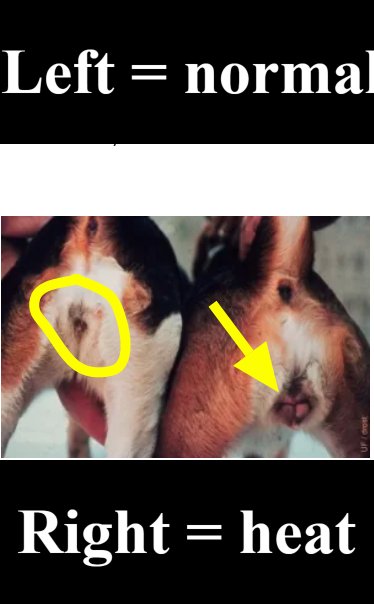How Long to Change a Dog’s Behavior: A Guide to Success
Last Updated on May 19, 2024 by Petpalace54
It takes 3-8 weeks to see changes in a dog’s behavior. Whether it’s a puppy or an adult dog, bad habits can be modified.
It requires patience, persistence, and consistency to make your goals clear and guide your canine friend away from unwanted behavior. Additionally, dogs’ energy levels remain consistent throughout their lives even as they age. While dogs may become calmer as they age, they do not lose their energy.
In fact, they learn when to be excited & when to be calm. This article will discuss How Long to Change a Dog’s Behavior and effective strategies to help pooches modify unwanted behavior.

Credit: spiritdogtraining.com
Table of Contents
- 1 How Long to Change a Dog’s Behavior: Understanding Dog Behavior
- 2 Time To Change Dog Behaviour
- 3 Techniques To Change Dog Behaviour
- 4 Behavior Modification
- 5 Challenges In Changing Dog Behavior
- 6 Tips For Changing Your Dog’s Behaviour
- 7 Frequently Asked Questions On How Long Does It Take To Change A Dog’s Behavior
- 8 Conclusion
How Long to Change a Dog’s Behavior: Understanding Dog Behavior
Changing a dog’s behavior can take anywhere from 3 to 8 weeks, depending on the specific behavior and the dog’s individual characteristics. It’s important to establish clear goals & be patient during the process, using techniques such as habituation, desensitization, and counterconditioning to guide the dog toward more desired behaviors.
Dogs have unique personalities and behaviors that can be a challenge for pet owners to understand. Understanding dog behavior is the key to modifying and correcting undesirable behavior in your dog. Whether you want your dog to learn a new behavior, or you want to change some bad habits, it’s critical to understand the underlying factors that influence their behavior.
Behavior Changes As A Dog Ages
Dogs, like humans, undergo several behavior changes as they age. While some changes are due to natural biological changes, others reflect changes in life circumstances. Generally, younger dogs are more energetic and playful, while older dogs may experience a decline in energy levels.
However, this does not necessarily mean that your older dog will become more manageable with time. Dogs of any age require proper training and care to modify their behavior successfully. Consistency and patience are essential when dealing with your dog’s behavior, especially when they get older.
Factors That Affect Dog Behavior
Several factors can impact your dog’s behavior, such as breed, health, training, and surroundings. Breed characteristics & temperamental traits can play a significant role in how your dog behaves. For instance, a breed known for aggression may exhibit aggressive behavior without proper training and attention.
Health conditions, pain, and illness can also impact your dog’s behavior, like acting out of character, being irritable, or suffering from anxiety. Hence, training is also key to shaping desirable behavior in your dog. Training lays the foundation for a well-behaved dog, and the lack of it can lead to undesirable habits.
Surroundings like the environment your dog lives in, its living conditions, and socialization, can impact your dog’s behavior. A dog that is not properly socialized can have fear and anxiety, leading to aggressive behavior.
Can Dog Behavior Be Changed?
Yes, any dog behavior can be changed, but it takes time and commitment. Changing your dog’s behavior requires patience, consistency, & proper training. Different behaviors take different lengths of time to modify, ranging from a few weeks to several months.
This process can be challenging, even frustrating at times, for both you and your dog. However, the results are worth the effort. With proper training and patience, your dog can learn to change their existing behavior and develop new, desirable habits that are satisfying for you both.
Time To Change Dog Behaviour
HTML Response:
As a dog owner, you may wonder how long it takes to change your dog’s behavior. The time it takes for your furry friend to adopt new and improved habits largely depends on several factors, such as the dog’s age, breed, prior training, & the extent of the problematic behavior. In this post, we’ll examine the different elements that can affect the time it takes to change your dog’s behavior, with a particular focus on neutered dogs.
Factors That Affect The Time It Takes To Change Dog Behavior
The time it takes to change a dog’s behavior is determined by several factors, including:
- The dog’s age
- The breed and its temperament
- The extent of the problematic behavior
- The time and consistency invested in training
If your dog is a puppy or adolescent, the changes will likely be faster than if they were an adult or senior dog. Young dogs are more open to learning and new experiences. Meanwhile, certain dog breeds are easier to train than others, and it’s essential to understand your dog’s breed characteristics to tailor your training approach. For problematic behaviors that are rooted in anxiety, fear, or aggression, the change may take a more extended period.
How Long Does It Take For Neutered Dog’s Behavior To Change?
Neutering is a surgical procedure that involves removing a male dog’s testicles, eliminating their ability to reproduce. But does neutering alter a dog’s behavior?
According to research, neutering can help reduce some behaviors such as roaming, sexual behavior, urine marking, and even aggression. It usually takes about three to six months for neutered dogs to modify their behavior. However, it’s not a miracle cure for all unwanted behaviors, and it should be viewed as one part of a comprehensive training & behavior modification program.
In general, it’s crucial to understand that every dog is unique, and the time it takes to change their behavior may differ. Therefore, patience, consistency, and positive reinforcement are key when trying to train your dog.
Techniques To Change Dog Behaviour
Changing a dog’s behavior can take anywhere from 3 to 8 weeks. Then, various techniques can be used such as habituation, counterconditioning, and response substitution. It requires patience and consistency to guide your dog away from unwanted behaviors.
As a dog owner, you might find yourself in a situation where you need to change your furry friend’s behavior. Whether you’re dealing with excessive barking, jumping up, or leash pulling, there are techniques you can use to modify your dog’s behavior & help them become a well-behaved pet. The techniques used most commonly to modify dog behavior include habituation, extinction, desensitization, counterconditioning, response substitution, and shaping. Now, we will explore each technique in detail, along with its effectiveness and the time it might take to see results.
Habituation
Habituation is a simple yet effective technique of exposing your dog to a stimulus repeatedly until they no longer reacts to it. For example, if your dog is afraid of vacuum cleaners, you can gradually introduce the vacuum cleaner to your dog, starting from far away and gradually moving closer, rewarding them with treats and praise for remaining calm. Over time, your dog will learn to get used to the presence of a vacuum cleaner in the room and eventually stop reacting to it. Habituation can take anywhere from a few days to a few weeks, depending on your dog’s temperament and the severity of their fear.
Extinction
Extinction involves eliminating reinforcement for an undesirable behavior. This means that if your dog is doing something you do not want them to do, you should stop rewarding them for that behavior and, instead, reward them for doing something else. For instance, if your dog jumps on you when you come home, you can ignore them until they stop jumping, and then reward them for sitting calmly. Keep in mind that ignoring your dog’s behavior may lead to an extinction burst, where your dog’s behavior becomes worse before it gets better. Therefore, it’s essential to stay consistent and remain calm throughout the process. Extinction can take anywhere from a few days to several weeks, depending on your dog’s behavior and consistency in implementing the extinction technique.
Desensitization
Desensitization is a technique that involves gradually exposing your dog to something they are afraid of or reactive to in small doses while ensuring they remain relaxed and comfortable. For example, if your dog is afraid of thunderstorms, you can play the sound of thunder at a low volume and reward them for remaining calm. Gradually increase the volume over time until your dog can tolerate the sound of thunder without reacting. Desensitization can take several weeks or even months, depending on your dog’s fear level and consistency in implementing the technique.
Counterconditioning
Counterconditioning is a technique that involves associating a positive experience with something that your dog is afraid of or reactive towards. For instance, if your dog is afraid of the vet, you can take them to the vet’s office and reward them with treats and praise while they are there. This will help your dog associate the vet’s office with positive experiences, reducing their fear & anxiety. Counterconditioning can take several weeks or even months, depending on your dog’s fear level and consistency in implementing the technique.
Response Substitution
Response substitution is a technique that involves teaching your dog a new, desirable behavior and reinforcing it instead of an undesirable behavior. For example, if your dog barks excessively when they want attention, you can teach them to sit or offer a toy instead. This technique may take a few weeks or even months, depending on how quickly your dog learns to substitute the new behavior for the old one.
Shaping
Shaping is a technique used to teach your dog a complex behavior by breaking it down into smaller, manageable steps. For example, if you want to teach your dog to retrieve the newspaper, you can break it down into smaller steps such as picking up the paper, holding it in their mouth, and bringing it to you. Shaping can be a time-consuming technique & may take several weeks or even months to see significant results, but it’s an effective way to teach complex behaviors.
Each of these techniques has its advantages and disadvantages, and the time it takes to change your dog’s behavior depends on various factors such as your dog’s personality, temperament, and the severity of the behavior. Consistency and patience are key to any successful behavior modification program, and you should always reward your dog for positive behavior. With time and patience, you can change your dog’s behavior and enjoy a happy, well-behaved pet.
Behavior Modification
Changing a dog’s behavior can take anywhere from 3-8 weeks of consistent training and patience. Whether it’s a newly adopted dog or an older one with bad habits, behavior modification techniques such as counterconditioning, shaping, & habituation can help guide them away from unwanted behaviors.
Remember, it’s important to stay committed and consistent with training methods to see long-lasting results.
Behavior Modification
Behavior modification refers to the process of changing a dog’s behavior to ensure it adheres to acceptable patterns. As a dog owner, you may need to modify your dog’s behavior to meet certain expectations, such as stopping excessive barking, jumping, or aggressive behavior. The good news is that with patience, consistency, and the right training methods, a dog’s bad behavior can be turned into good behavior within a few weeks. Here, we’ll discuss the timeline for modifying a dog’s behavior, as well as the adjustment period when you bring a new dog home.
Adjustment Period when You Bring a New Dog Home
When bringing a new dog home, it’s crucial to remember that the adjustment period will be different for every dog. During this period, the dog will observe the new environment, people, and routine, and it’s important to introduce them gradually to ensure they adjust smoothly. The adjustment period may take anywhere from a few days to several weeks, depending on the dog’s personality, breed, and age.
To make the adjustment period easier, it’s essential to establish a consistent routine, provide positive reinforcement, and reward good behavior. Also, ensure you create a safe and comfortable space for the dog to relax and interact with the family. By creating a conducive environment, you’re setting up the foundation for successful behavior modification.
How Long Will it Take for Behavior Modification?
As mentioned, behavior modification is a process that requires patience, consistency, and dedication. If you’re training your dog on your own, be prepared to devote at least 3-8 weeks to achieving a noticeable behavior change. However, keep in mind that every dog is different and may take longer to modify behavior, particularly if it involves long-standing habits or aggression issues.
The success of behavior modification depends on various factors, including the dog’s age, breed, personality, and training methods. Positive reinforcement training, for instance, is an effective technique that rewards the dog for good behavior and ignores negative behavior. By being consistent with the training methods and providing the dog with positive reinforcement, you’ll be able to modify their behavior in a reasonable timeframe.
Ultimately, the length of time it takes to modify a dog’s behavior varies but can range from 3-8 weeks or more. The key to successful behavior modification includes establishing a consistent routine, providing positive reinforcement, and creating a safe environment for the dog. While it may take some time and patience, the process can be highly rewarding for both the dog and the owner.
Challenges In Changing Dog Behavior
Changing a dog’s behavior can be challenging, and the length of time it takes can vary depending on the dog’s personality, age, and the severity of their behavior. While some behavior changes may take only a few weeks to notice, it can take several months to see significant improvements in a dog’s behavior.
Patience, consistency, and positive reinforcement are key in changing a dog’s behavior.
Challenges in Changing Dog Behaviour
Changing a dog’s behavior can be a difficult and time-consuming task. Dogs, like humans, develop habits that can be difficult to break. The key to changing a dog’s behavior is patience, consistency, and dedication. It’s essential to understand that altering a dog’s behavior takes time and requires a lot of effort.
Hindrances to Changing Dog Behaviour
There are several hindrances to changing dog behavior that pet owners need to be aware of. Here are some of the most common:
1. Lack of Consistency: Dogs thrive on routine and consistency. If they receive mixed messages, it can confuse them, making it challenging to change their behavior.
2. Aggression: If a dog is aggressive, it can be challenging to modify its behavior. Aggressive dogs require special training and care, and in some cases, professional help may be necessary.
3. Age: Changing an older dog’s behavior can be more challenging than changing a young dog’s behavior. Older dogs have already developed habits that may be difficult to break.
Role of Patience
Patience is key when it comes to changing a dog’s behavior. It takes time for a dog to learn and adapt to new habits. Pet owners should be patient & consistent in their efforts to modify their dog’s behavior. It’s essential to reward good behavior and not punish bad behavior. Dogs learn through positive reinforcement, encouraging them to repeat the behavior that results in rewards.
In conclusion, changing a dog’s behavior is a complex process that can take weeks or even months to achieve. It requires patience and consistency, as well as a deep understanding of the dog’s personality and habits. Pet owners must be willing to put in the time and effort required to modify their dog’s behavior, even in the face of obstacles and challenges. With the right approach, a dog’s behavior can be changed for the better, resulting in a happier and healthier relationship between pet and owner.

Credit: www.aspca.org
Tips For Changing Your Dog’s Behaviour
Training a dog to change its behavior is a gradual process that can take anywhere from 3 to 8 weeks, depending on the dog and the behavior being addressed. Consistency, positive reinforcement, and patience are key to successfully modifying a dog’s behavior.
It is also important to understand that dogs will never stop learning and training should be ongoing to maintain good behavior.
Consider A Trainer’s Help
If you have tried and tested all the methods you know and still failing at your dog’s behavior training, do not hesitate to seek professional help. A certified dog trainer can offer one-on-one training to correct any behavioral issues your dog is facing. A specialized trainer can offer tailor-made solutions to your dog’s unique behavioral challenges.
Setting Realistic Goals
It is essential to set clear and realistic goals for your dog’s behavior. Unreasonable expectations can harm your dog’s training progress and lead to disappointment. Instead, break down the behavior you want to change into steps and focus on one at a time. Celebrate small successes and gradually increase the level of difficulty. This way, the process will remain positive, & your dog will learn faster.
Avoid Ambiguity
Dogs do not understand long and complicated sentences. For your dog to understand you, your commands should be short and precise. Avoid using ambiguous words like “No” or “Stop” as they may confuse your furry friend. Use simple and clear commands repeatedly, and praise them when they obey. This way, it will reinforce positive behavior.
Positive Reinforcement
Positive reinforcement is the most effective method for changing your dog’s behavior. Praise and rewards like treats and toys are essential to motivate your dog. Dogs love to please their owners, and when they see that their behavior yields positive results, they will repeat it. Remember only to reward them when they do well & not to punish them for bad behavior.
In conclusion, changing your dog’s behavior requires patience, consistency, and a positive attitude. It is essential to understand your furry friends and use the appropriate techniques to train them. Seek help from a qualified dog trainer if you feel stuck & set realistic and clear goals for your dog. With adequate training, your furry friend will become a well-behaved companion in no time.

Credit: www.aspca.org
Frequently Asked Questions On How Long Does It Take To Change A Dog’s Behavior
Do Dogs Get Better Behaved With Age?
As dogs age, they become calmer, but their energy level remains the same. However, dogs can learn to control their excitement and behave better with age. It takes time, patience, and consistency to train a dog and modify their behavior.
All dogs, whether puppies or adults, can develop bad habits that need curbing. The techniques used to modify dog behavior include habituation, extinction, desensitization, counterconditioning, response substitution, and shaping. Dog behavior changes around one to three years of age.
Can Dog Behavior Be Changed?
Yes, any dog, whether they’re puppies or adults, can develop bad habits but bad dog behavior can be changed with time and patience. It will take a consistent approach to make your goals clear and guide them away from unwanted behaviors.
Using positive reinforcement and training techniques can help curb unwanted behaviors in dogs. The timeframe needed to change dog behavior can vary and may take 3-8 weeks depending on the dog’s age, temperament, and previous behaviors.
How Do You Correct A Dog’s Behavior?
To correct a dog’s behavior, you can use techniques such as habituation, extinction, desensitization, counterconditioning, response substitution, and shaping. Patience and repetition are key, as it can take 3-8 weeks to see results. Avoid using flooding as this can make behavior worse.
Provide clear guidance to make your goals clear and curb unwanted behaviors. Remember that any dog, whether a puppy or an adult, can develop bad habits.
At What Age Do Dogs Behavior Change?
Dogs’ behavior changes around one to three years of age, as their personality begins to evolve. However, bad habits can be formed at any age, so pet owners should guide their dogs away from them and make goals clear through strategies like habituation, extinction, and shaping.
Changing a dog’s behavior takes time, patience, practice, repetition, and guidance.
Conclusion
You know now how Long to Change a Dog’s Behavior successfully. Changing a dog’s behavior requires patience, repetition, and consistency. It can be challenging to change deep-rooted behavior patterns, and the time required can vary depending on the dog’s age, temperament, and the nature of the issue. It is essential to understand that dog behavior will not change overnight, but with the right approach and training, positive progress can be seen in as little as 3-8 weeks.
Yes, by investing time and effort, you can help your furry friend develop good behavior habits that will last a lifetime. Thus, keep practicing, and eventually, you will see the behavior changes you desire.






